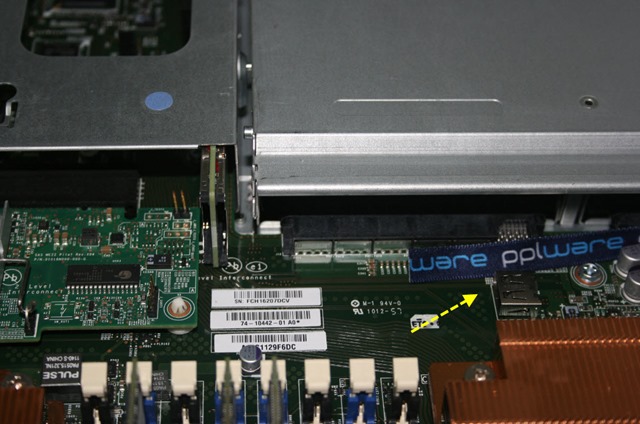

Here’s a better image, click for mega sized. This changes if you look at it from the bottom – you see a striped pattern which probably serves as the clocking information which allows the drive to compensate for variations in spindle speed. If you take the disk and open the shutter and look at the top surface, it looks like a regular HD disk – it’s smooth.

How does this work? Well unfortunately, I wasn’t able to find it online – but now that I have the disk in hand, some of the mystery is unravelled. So, what’s so special about the disk that makes it a Superdisk? Well, it’s the laser servo technology that improves positioning accuracy to allow higher recording densities. The shutter is given a unique shape as well as the label area, but the Superdisk can be inserted into a standard floppy drive (although, it will not work as an HD disk, even if you try, likely due to the coercivity of the media). The disk itself is identically sized to a 3.5″ floppy disk and has the same holes as the HD disk. It’s still a Superdisk! Here’s a high quality scan of the insert with the warranty statement on the inside. Uh what? Not a blue coloured disk!? Oh well, that’s new and unexpected. I hesitated to unwrap them given their condition, but I decided opening one wasn’t a problem. … et voila! Three new Imation/3M LS-120 Superdisk cartridges, still in wrap. I was lucky that an Australian seller had some, still in wrapping, at an agreeable price (roughly $4 per disk). eBay! It’s a great thing that eBay has almost practically anything, although for rare and old vintage devices, the prices can literally go through the roof. I still remember the blue body and special shaped silver coloured shutter quite fondly, like as in the LS-120 Wikipedia article.

Given that the LS-120 was never really that popular, I didn’t see any computer stores stocking it, and none of my friends ever had any. I had no Superdisk/LS-120 media, and the drivers for the Parallel Port version were completely AWOL. Unfortunately, at the time, I could only look at the performance of the ZIP 100, and then, only of the USB 1.1 bus-powered Pocket ZIP 100 drive. A relatively long time ago, I reminisced about the iomega ZIP 100 and the 3M/Imation Superdisk LS-120 superfloppy systems.


 0 kommentar(er)
0 kommentar(er)
